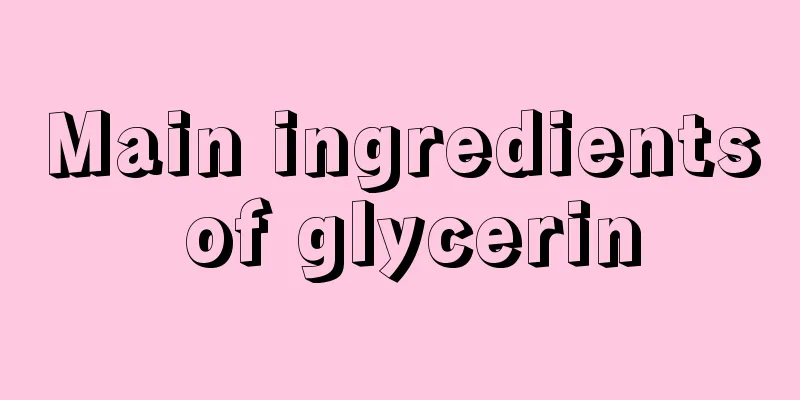Main ingredients of glycerin

|
Speaking of glycerin, the first thing that reacts to everyone is its ingredients. There is nothing much to know about it. Although it can be eaten and used as many natural raw materials, but so far, except for people living in the processing industry, many ordinary people do not know much about the ingredients of glycerin. If you use it directly without understanding the ingredients, you will feel uneasy. So what is the main ingredient of glycerin? Production method The industrial production methods of glycerol can be divided into two categories: the method using natural oils as raw materials, the glycerol obtained is commonly known as natural glycerol; the synthetic method using propylene as raw material, the glycerol obtained is commonly known as synthetic glycerol. Natural glycerin Before 1984, all glycerin was recovered from the by-products of soap making from animal and vegetable fats. To date, natural oils and fats are still the main raw materials for the production of glycerin, of which about 42% of natural glycerin is obtained as a by-product of homemade soap and 58% comes from fatty acid production. Saponification reaction of fats and oils in the soap making industry. The saponification reaction product is divided into two layers: the upper layer mainly contains fatty acid sodium salt (soap) and a small amount of glycerol, and the lower layer is the waste alkali liquid, which is a dilute glycerol solution containing salts and sodium hydroxide, generally containing 9-16% glycerol and 8-20% inorganic salts. Grease reaction. The glycerin water (also called sweet water) obtained by the hydrolysis of oils and fats has a higher glycerin content than the soap-making waste liquid, about 14-20%, and inorganic salts 0-0.2%. In recent years, continuous high-pressure hydrolysis has been widely used. The reaction does not use a catalyst, and the resulting sweet water generally does not contain inorganic acids. The purification method is simpler than that of waste alkali liquid. Whether it is soap-making waste liquid or glycerin water obtained from oil hydrolysis, the glycerin content is not high and both contain various impurities. The production process of natural glycerin includes purification and concentration to obtain crude glycerin, as well as the refining process of crude glycerin distillation, decolorization and deodorization. This process is described in detail in some books and periodicals. Synthetic glycerol The various pathways for synthesizing glycerol from propylene can be summarized into two major categories, namely chlorination and oxidation. The propylene chlorination method and the propylene irregular acetic acid oxidation method are still used in industry. Propylene Chlorination This is the most important production method for synthetic glycerol, which includes four steps, namely high-temperature chlorination of propylene, hypochlorination of allyl chloride, saponification of dichloropropanol and hydrolysis of epichlorohydrin. The hydrolysis of epichlorohydrin to produce glycerol is carried out at 150°C and 1.37MPa carbon dioxide pressure in an aqueous solution of 10% hydroxide and 1% sodium carbonate to produce a glycerol aqueous solution containing sodium chloride with a glycerol content of 5-20%. After concentration, desalination and distillation, glycerol with a purity of more than 98% is obtained. Propylene peracetic acid oxidation method Propylene reacts with peracetic acid to synthesize propylene oxide, and propylene oxide isomerizes to olefins and propanols. The latter then reacts with peracetic acid to form glycidol (i.e. glycidol), which is finally hydrolyzed into glycerol. The production of peracetic acid does not require a catalyst. Acetaldehyde is oxidized with oxygen in the gas phase. Under normal pressure, 150-160°C, and a contact time of 24 seconds, the acetaldehyde conversion rate is 11% and the peracetic acid selectivity is 83%. The latter two steps of reaction are carried out continuously in a reaction distillation tower with a special structure. After the raw material allyl alcohol and the ethyl acetate solution containing peracetic acid are fed into the tower, the tower bottom is controlled at 60-70°C and 13-20kPa. The ethyl acetate solvent and water are evaporated from the top of the tower, and the glycerol aqueous solution is obtained in the bottom of the tower. This method has high selectivity and yield, uses peracetic acid as an oxidant, does not require a catalyst, has a fast reaction speed, and simplifies the process. The production of 1 t of glycerol consumes 1.001 t of allyl alcohol, 1.184 t of peracetic acid, and 0.947 t of acetic acid as a by-product. At present, the output of natural glycerin and synthetic glycerin each accounts for almost 50%, while the propylene chlorination method accounts for about 80% of the total glycerin output. Natural glycerin accounts for more than 90% of the total production in my country. Industrial grade glycerin Dilute the industrial-grade glycerin with 1/2 amount of distilled water, stir thoroughly, add activated carbon, and heat to 60~70℃ for decolorization. Then, vacuum filter to ensure that the filtrate is clear and transparent. The dropping speed is controlled, and the filtrate is added to a column mixed with a pre-treated 732 type strong acid cation resin and a 717 type strong base cation resin to adsorb and remove electrolytes and non-electrolyte impurities such as aldehydes, pigments, and esters in glycerol. The glycerol solution after impurities are removed is subjected to reduced pressure distillation, and the vacuum degree is controlled to be above 93326Pa. The kettle temperature is 106-108°C. After most of the water is evaporated, the kettle temperature is raised to 120°C for rapid dehydration. When no water is produced, heating is stopped, and the material in the kettle is the finished product. |
<<: Disadvantages of invisible braces
>>: Does glycerin make the skin darker?
Recommend
Are there targeted drugs for gastric cancer treatment? There are three types
Gastric cancer targeted drugs include anti-HER2 g...
How to treat women with less water
If women have less water during sex, it will affe...
How to treat the nodules left by acne
I believe many people have experienced acne. Most...
How to care after lymphoma surgery
In clinical practice, lymphoma patients should no...
What are some ways to remove the garlic taste in your mouth?
I believe that for many friends in northern citie...
Symptoms that will appear in the early stage after suffering from cardia cancer
After suffering from cardia cancer, the main symp...
How to match health-preserving soy milk
Nowadays, more and more people are pursuing healt...
Are seedless grapes really injected with birth control pills?
I believe many people have heard reports about se...
What should I do if my clothes zipper doesn’t fit?
Many clothes have zippers, and some clothes have ...
My scalp always feels like bugs are crawling on it
We all know that many people want to have black a...
What are the treatments for advanced colorectal cancer?
Intestinal cancer (carcinoma of rectum) is a comm...
How to take care of your fingernails
Fingernails are the keratinous shells on human fi...
Five serious misunderstandings about eating eggs in summer
Eggs are a common food in our lives, and eating t...
Gastroscopy can detect pancreatic cancer
As a secretory gland of human beings, the pancrea...
Standard of alanine aminotransferase
We all know that there are many transaminases in ...









